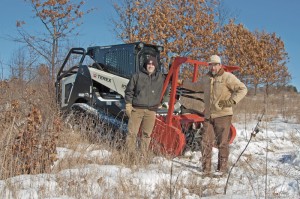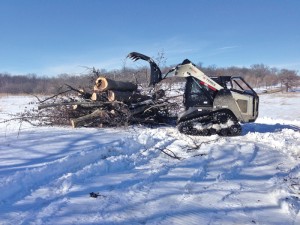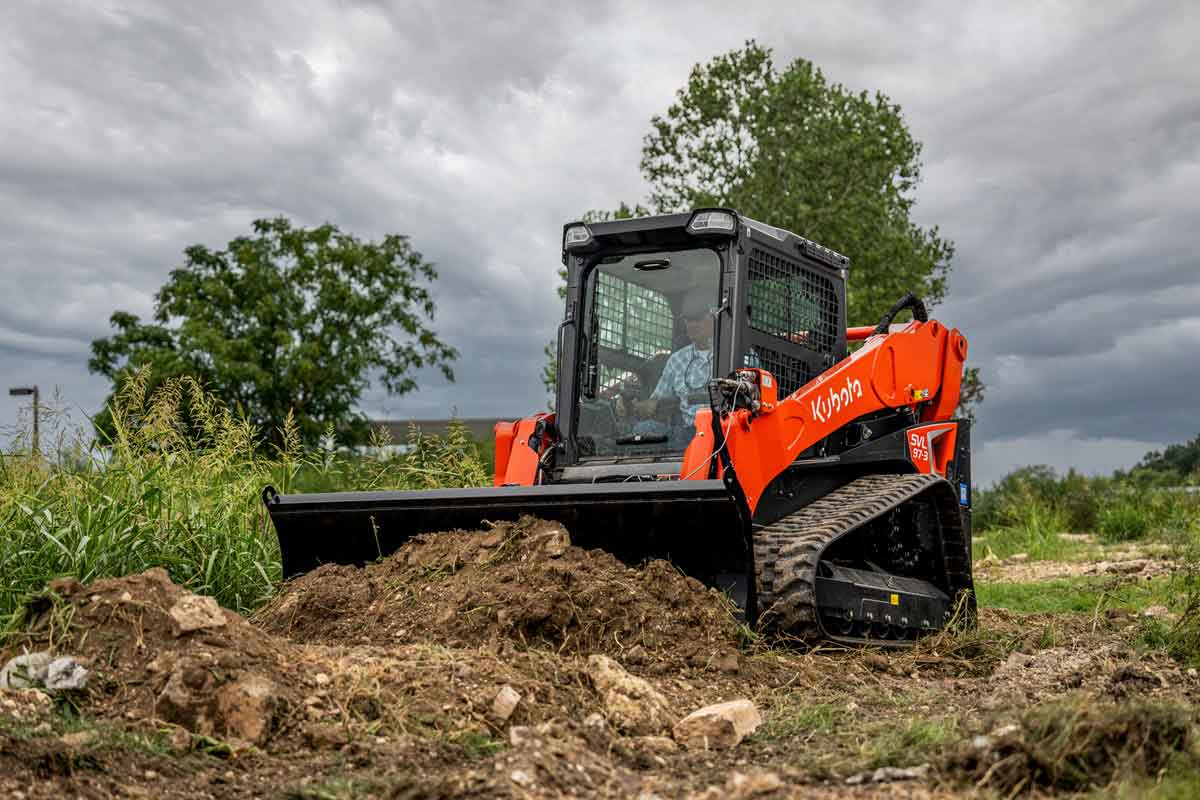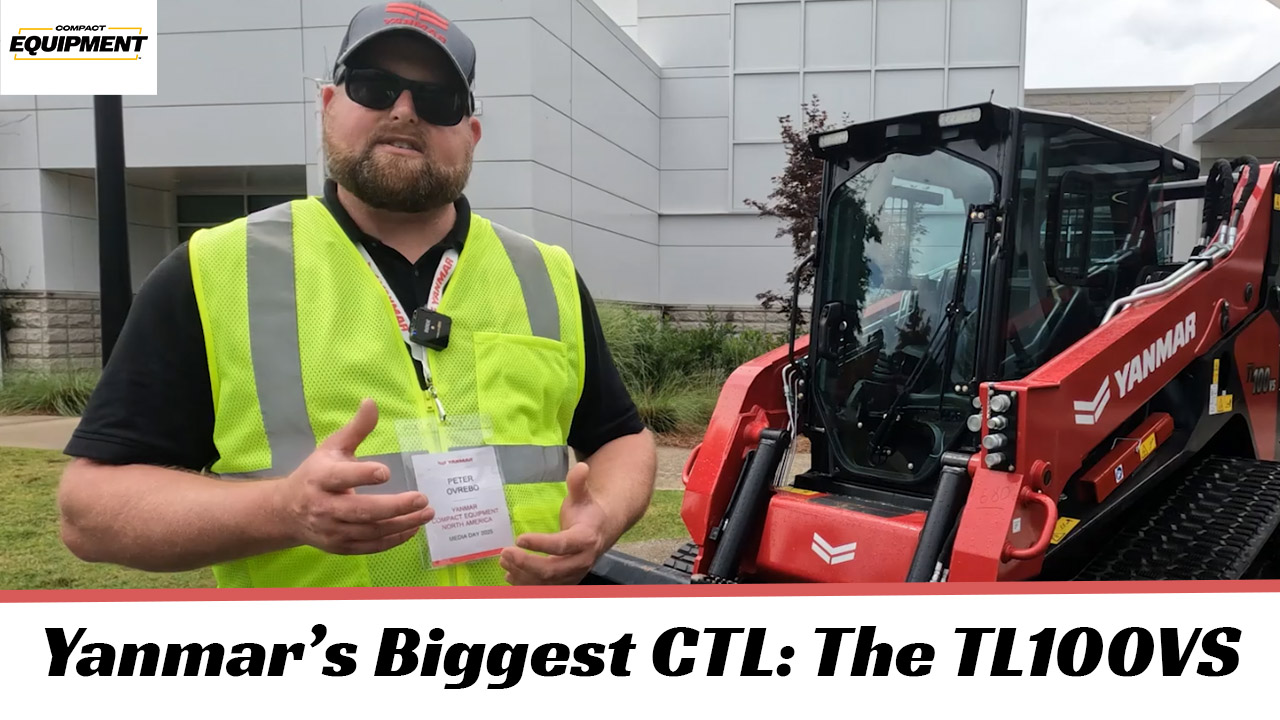Nature Conservancy Relies on Terex Forestry Track Loader at Nachusa Grasslands
Since 1951, the Nature Conservancy has worked across the globe to support and preserve a multitude of unique and natural habitats. These efforts are successful thanks to: 1) the Nature Conservancy’s awesome employees; 2) countless volunteers and donors; and 3) perfectly-spec’ed compact machinery.
In Illinois, the organization protects six areas: Nachusa Grasslands, Kankakee Sands, Spunky Bottoms, The Grassy Slough Preserve in the Cache River Wetlands, Emiquon and the Indian Boundary Prairies. Thanks to the efforts of Nature Conservancy employees Bill Kleiman (project director), Cody Considine (restoration ecologist) and various volunteers (Friends of Nachusa Grasslands), the Nachusa Grasslands, specifically, is in the midst of a restoration project, bringing back native species and eliminating those that have infiltrated its borders in the preceding decades. Located about two hours west of Chicago, the Nature Conservancy first purchased land in the Nachusa Grasslands in 1986.

The Nature Conservancy employs, from left, Cody Considine (restoration ecologist) and Bill Kleiman (project director) at the Nachusa Grasslands. This dynamic duo relies on many volunteers and a Terex PT110 Forestry track loader to revitalize grasslands two hours west of Chicago.
Though the Nature Conservancy has a fleet of equipment at the Nachusa Grasslands, the one piece of equipment it leans on for most of its work is the compact track loader. In this case, the machine of choice since early 2014 is the Terex PT110 Forestry model. Nature Conservancy colleagues and those who work in nearby preserves use compact track loaders from John Deere, Caterpillar and Bobcat, but the PT110 fits the needs at Nachusa.
“What set this Terex apart was, that it is built and designed for the work that we do in the field,” Considine says. “Being able to run the Fecon brush head and having enough hydraulic horsepower was key. The extra wide track, the higher ground clearance and a lot of features like those we felt were critical to us doing our jobs efficiently and safely with minimal maintenance.”
Extra wide tracks are definitely key when traversing wetland areas and working in areas where lower ground pressure and high flotation are important. The versatility a compact track loader allows Kleiman, Considine and a bevy of volunteers to perform a wide variety of work that includes, but is not limited to, brush clearing, loading and unloading trucks, building fences and grinding stumps. By far the most used attachment, according to Considine, is the Fecon mulching head.
The Conservancy was familiar with the Fecon brand and used its earlier models, which Considine praised for ease of maintenance, but it was time to upgrade to one with more power.
“Right now, we have a Fecon brush head on it,” he says. “It mulches small diameter trees and other small shrubs we use exclusively for putting in firebreaks [for] restoring oak woodlands. There is a lot of non-native vegetation that has come in over the last several decades, and this machine helps us fight back the brush and gives us a leg up on the initial restoration work.”
The firebreaks are essential to successful prescribed burns that help hasten the revitalization of the nearly 4,000 acres of land comprising the Nachusa Grasslands. The Nature Conservancy also assists at the neighboring state preserves. The conservancy’s goal at Nachusa is to restore and maintain healthy tallgrass prairie, woodlands, savannas and wetlands. The restored landscape may offer a glimpse at the way the land was in the 1800s, and we can’t help but agree with their philosophy and plan of action.
This segues nicely to another important project that the Terex track loader was of crucial use — the reintroduction of bison to the grasslands in 2014. Fences needed to be erected to cordon off the animals, once native to the area, and the PT110, fitted with an auger attachment, helped the crews build the fences quicker. Fence duty is ongoing since the bison introduction last fall. The machine allows the volunteers to work in two- to three-man crews as opposed to working with a dozen or more volunteers by hand.

Fitted with a grapple, the Terex PT110 easily moves the trees and other debris out of the way. The grapple, auger and Fecon brush head are the three most used attachments at the Nachusa Grasslands.
For organizations like the Nature Conservancy, volunteers — many of whom have little experience with compact construction equipment — are key to successful projects. This highlights another bonus of the Terex machine. Considine says the PT110’s ease of use increases the equipment’s value to the conservation efforts. With a little training and testing to meet Nature Conservancy criteria, just about anyone can use the machine.
“I use it quite a bit. This machine is considerably more powerful,” says David Crites, a Nachusa Grasslands volunteer comparing the Terex to the organization’s former compact track loader. Crites was taking a break from building a bison fence, when he spoke to Compact Equipment. “Switching tools is easy; it has the hook-ups for high- and low-flow hydraulics. We use the high flow when we use our Fecon forestry mulcher. We use the low flow when we are using the hole drill for drilling fence posts. We have a 12-in. rock auger, and it will go through anything.”
Crites says the Nachusa Grasslands previous compact track loader, which was not a Terex, worked well with similar attachments but coupled with the Terex PT110 the attachments are more effective. Crites has used the track loader to unload trailers, plow snow and move items around the vast grasslands.
“The big thing is the Fecon forestry mulcher is more powerful than the Fecon one we used on our previous model,” Crites says. “This has auto gear down when it hits larger items to increase the torque and keep working. The last version would bog down and stop the machine. We don’t have that happen with the Terex.”
Considine did offer some tips for keeping the Fecon attachment in top form and getting the most use out of it. In his experience, the attachment can handle up to 8- to 10-in. diameter trees but even those can be a bit much, taking a longer time to go through. They grease two zerks on each side of the head after each work period and periodically check the belt tension, which Considine says is never a problem.
As with any mulching attachment, checking the carbide teeth for wear is the biggest thing. Missing teeth can lead to vibrations in the head, which can damage not only the attachment but also the equipment. “Rocks can ruin carbide cutting teeth,” he says. “Fence or other wire can get wound up in it quickly.”
He also adds this word of caution for working around the machine when brush cutting, “Make sure other workers are several hundred feet away. [It is] best not to have anyone working near you. The machine can shoot debris rocks or other objects out and hurt someone badly.”
Considine and Crites praised the PT100 for being easier to maintain and clean. The latter is important when working with brush and in varying climates from the warm summer heat to the frigid cold of winter. The track loader features a flat undercarriage that can be removed, which makes cleaning the machine easier. Considine says the electronics are more user-friendly and it features a more comfortable suspension that is “worlds different than the other types of suspensions used on other machines.”
Lest the reader think that the Nachusa Grasslands contingent does not work with other equipment, the organization rounds out its fleet with several UTVs, about a dozen pieces of fire equipment and four tractors — three John Deere and a Kubota. The workhorse, in terms of versatility, is the Terex.
“These compact machines are so convenient to switch out an implement and get into tight places, and they are incredibly efficient. Considering the ease of doing all of that work, it’s better than a tractor for instance,” Considine says. “I can’t imagine doing the work that we do without one.”
Mike Kezdi is a contributing editor to Compact Equipment, based in Brecksville, Ohio.




